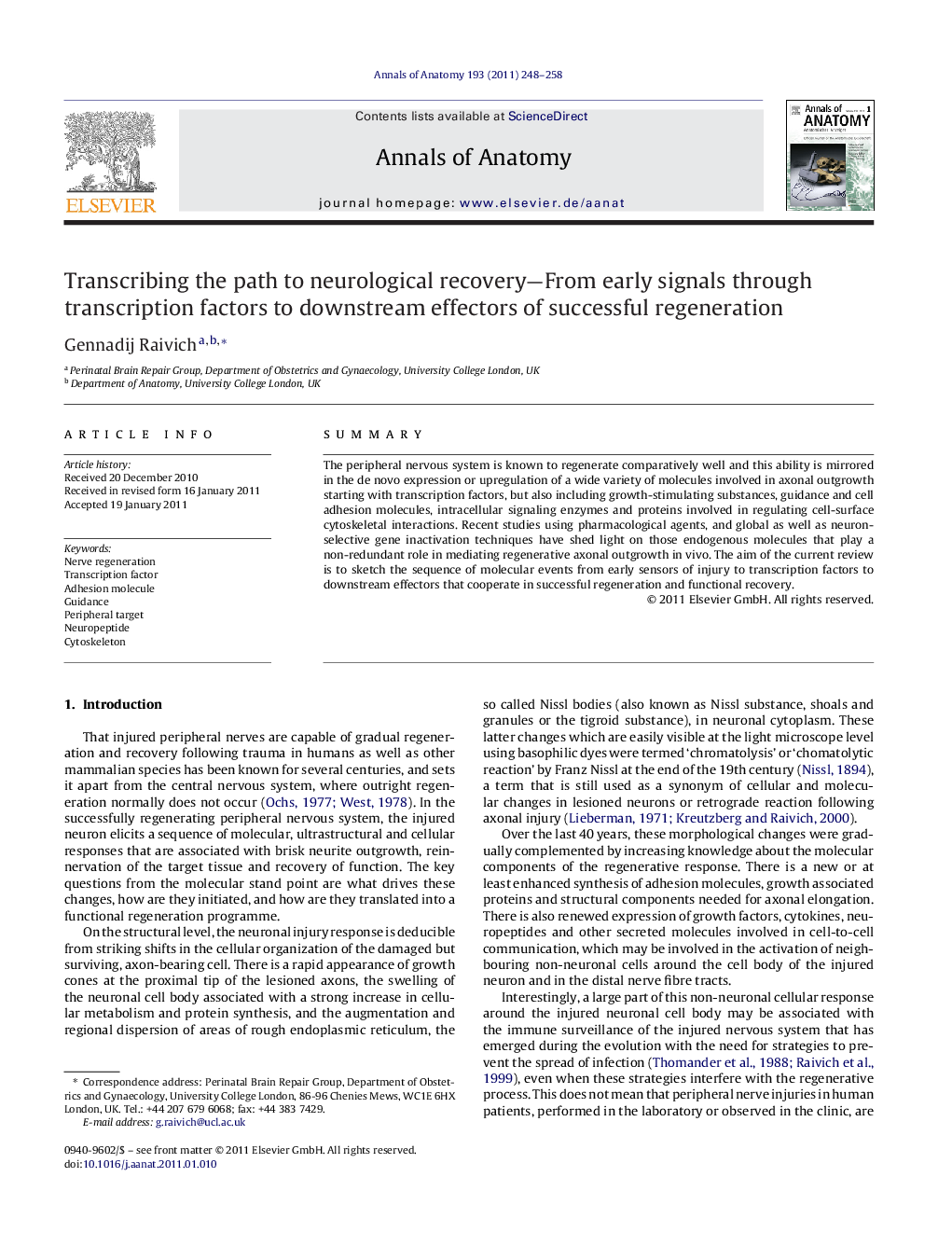| Article ID | Journal | Published Year | Pages | File Type |
|---|---|---|---|---|
| 8461985 | Annals of Anatomy - Anatomischer Anzeiger | 2011 | 11 Pages |
Abstract
The peripheral nervous system is known to regenerate comparatively well and this ability is mirrored in the de novo expression or upregulation of a wide variety of molecules involved in axonal outgrowth starting with transcription factors, but also including growth-stimulating substances, guidance and cell adhesion molecules, intracellular signaling enzymes and proteins involved in regulating cell-surface cytoskeletal interactions. Recent studies using pharmacological agents, and global as well as neuron-selective gene inactivation techniques have shed light on those endogenous molecules that play a non-redundant role in mediating regenerative axonal outgrowth in vivo. The aim of the current review is to sketch the sequence of molecular events from early sensors of injury to transcription factors to downstream effectors that cooperate in successful regeneration and functional recovery.
Related Topics
Life Sciences
Biochemistry, Genetics and Molecular Biology
Cell Biology
Authors
Gennadij Raivich,
